Prayers for the Ancestors, Hokkien‑style
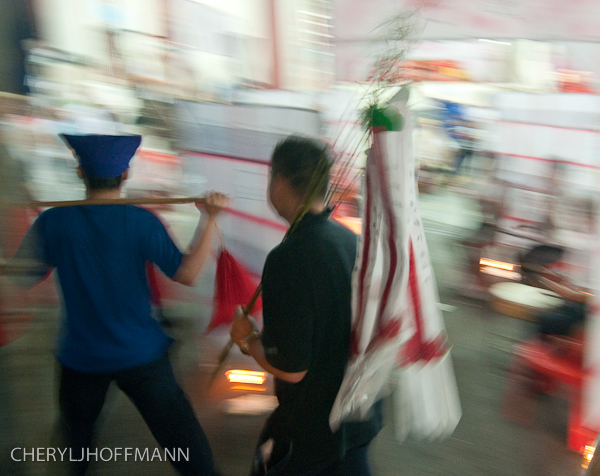
I had a very special opportunity this week to attend a ritual Taoist ceremony held to honor the deceased parents of a Hokkien family. And people ask me why I like living in KL!? The Low family was very hospitable and it was a real treat to share this special celebration with them. This is not an uncommon ritual – it’s just rare for me to have an opportunity to photograph one. These rituals are held to honor relatives (usually parents) who have passed away, in the third year after their death. I know I’m simplifying here, but it is okay for this to be the starting point for collecting more information about this ceremony.
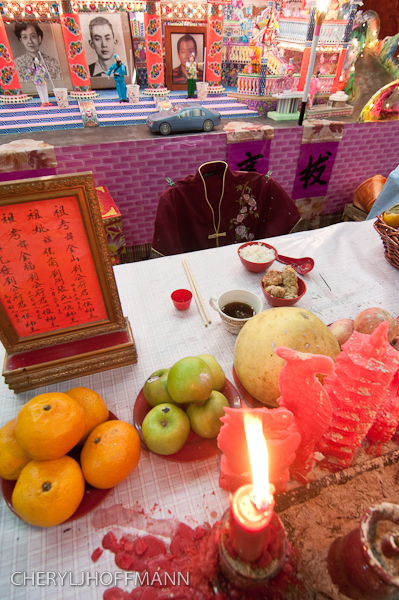
The family spent 3 days in special prayers during which they thanked their ancestors for all of their hard work in getting the family to the position of prosperity that it now enjoys. The end goal is to honour the parents by sending them things that they can enjoy in heaven. For those of you reading this, who are not familiar with the ritual, the objects are made of paper – everything from houses to servants, cars, clothes, credit cards, and every electronic device a modern household could hold, and these are burned in a ceremonial fashion at the end of the prayers.
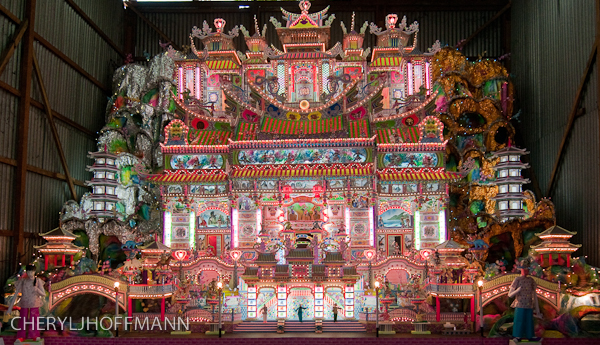
I was certainly glad to know that if my children offer me up a mansion like this that it comes with plenty of servants to take care of it! This ritual can take the form of a very simple offering of paper objects to an elaborate extravaganza like this one. There was even a Chinese opera performance, which I understand is common but not everyday. For this ceremony, they had erected a small stage for the performances.
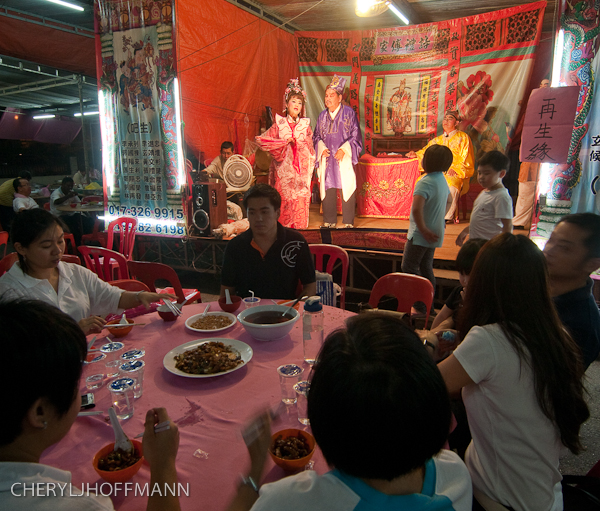
The actual opera stage of the temple was being used by the priests for the main prayers. It was elaborately decorated with scrolls and curtains that the priests transport from ceremony to ceremony.
I was there for two evenings of the three-day event. But I got to see a lot. Backstage at the opera was fun – this is a small Teochew group from near Johor.

(Teochew and Hokkien are mutually intelligible languages.) It was a very relaxed performance and there were lots of jokes from the stage and interaction with the audience and my camera.
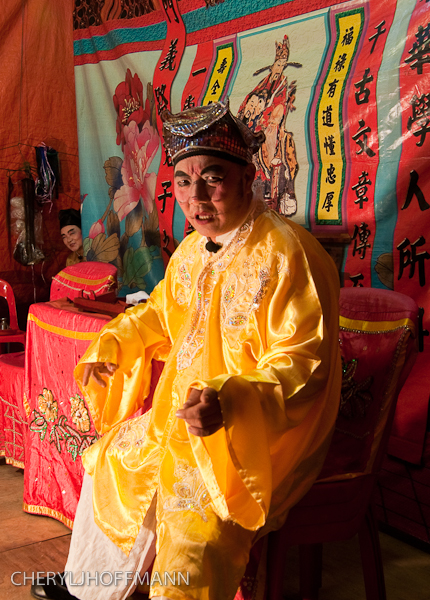
The first evening I was there, the priests performed an offering prayer which involves opening the paths to heaven for the parents. The priests make lovely patterns as they move around to the symbolic corners of the Taoist compass.
Throughout the whole ceremony, the children of the deceased wear traditional loose-woven hemp clothing and head coverings to symbolize humility. The next generation, the grandchildren, wear dark coarsely-woven cotton cloth during the rituals.
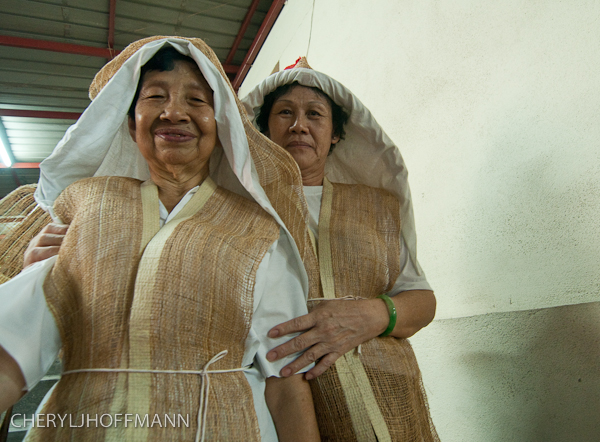
One important ritual of the second evening is the breaking down of the walls that symbolize the four directions. A paper room had been built near the altar and the family members circumambulated the walls, moving faster and faster as they followed the priests, creating a maze. They carried the paper flag that represented the spirits of the deceased and one young man got to hold two heavy bags of rice on a pole.
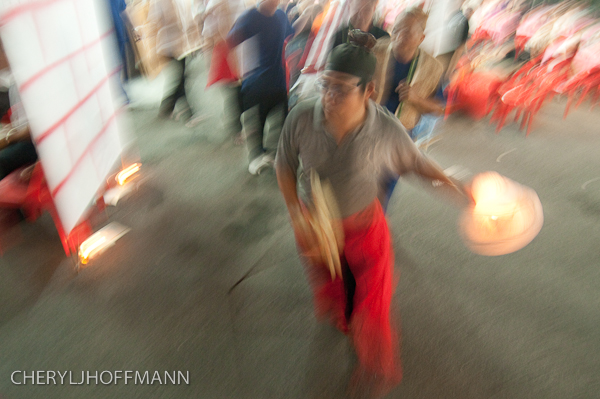
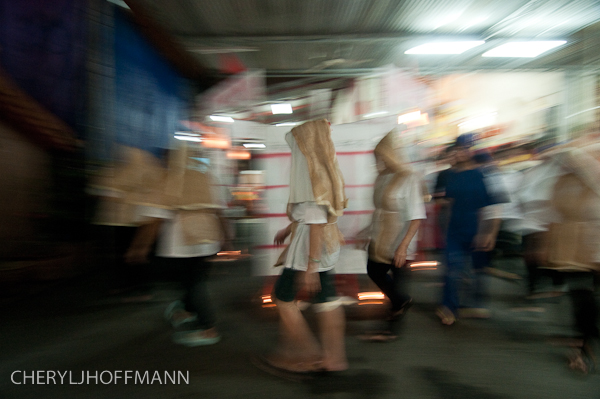
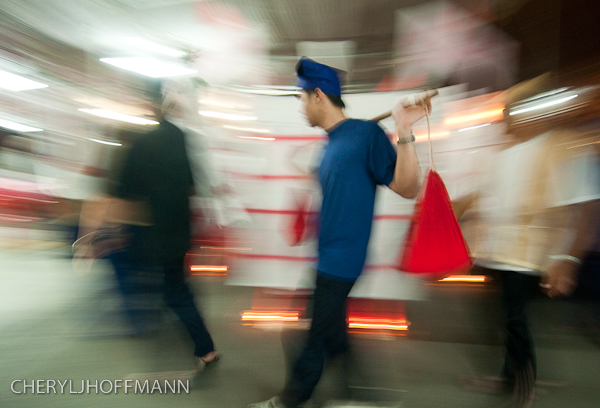
After an long and interesting dialogue between the priests and the family about the legacy of the deceased, the priest symbolically broke down the walls of the compass and allowed the spirits to go to heaven.
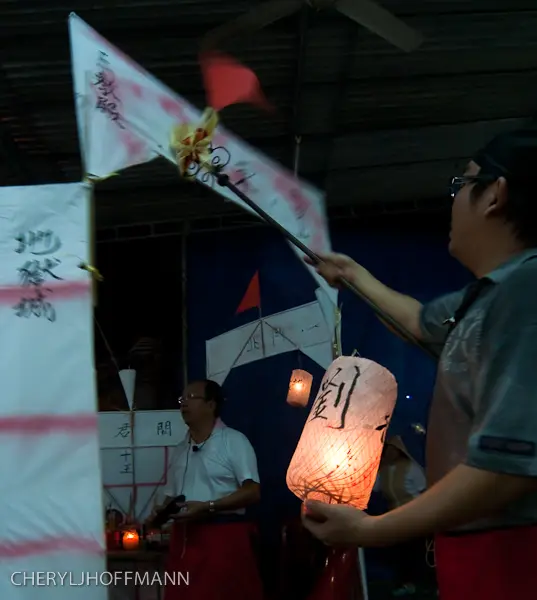
Shortly after this, the family burned money for the deceased in the form of paper gold, and silver bars. During this ritual, the extended family made a circle around the firepit and banged on metal objects in order to scare away any spirit thieves that might be lurking.
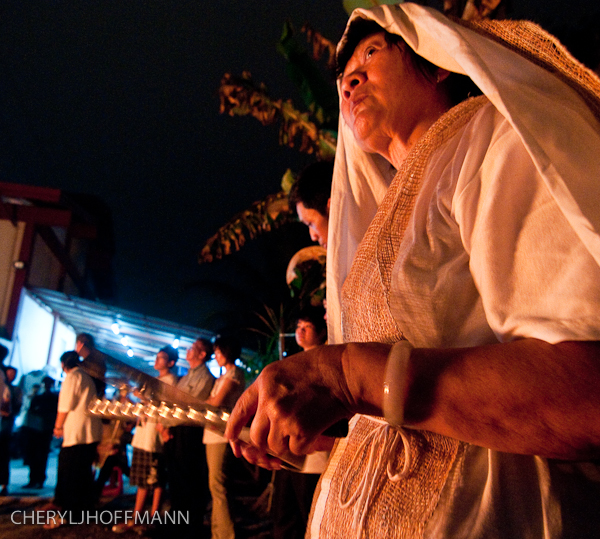
The next night the family held a dinner for hundreds of friends and relatives. The priests then conducted more prayers for the family surrounded by all of the paraphanelia that was ready for burning. Part of this ritual involves tossing coins to allow the deceased to communicate with the living. Yin and Yang (what I would call Heads and Tails) have to come up when one of the family members tosses two coins at the moment that the priest is asking the deceased if they are ready to receive the objects being offered to them. (I’m sure that the Chinese have a nice rhyming couplet to describe that!) In this case, it took a couple of tries and in fact, another family member had to come to the front of the group in order for the deceased to be pleased enough to allow the offering to proceed.
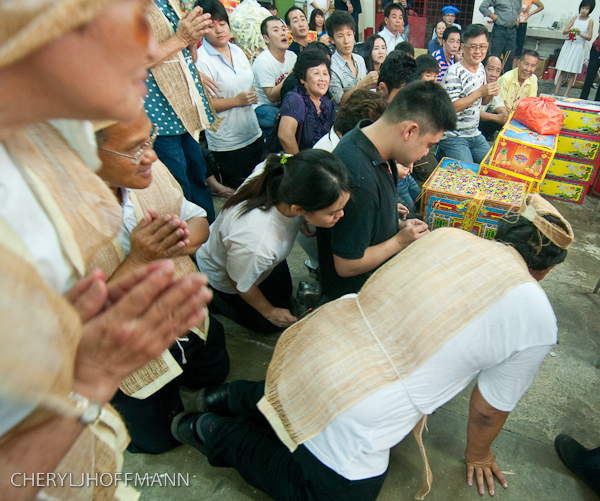
Then the fun began as the houses were dismantled and carried out to the back of the temple to the Burning Ground.
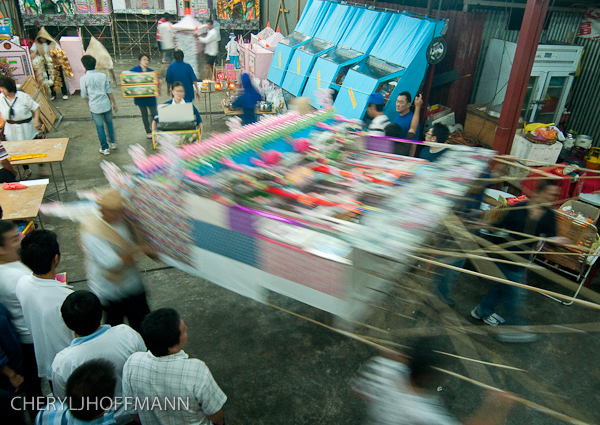
The gold and silver mountains went by as well.

And the whole thing was reassembled.
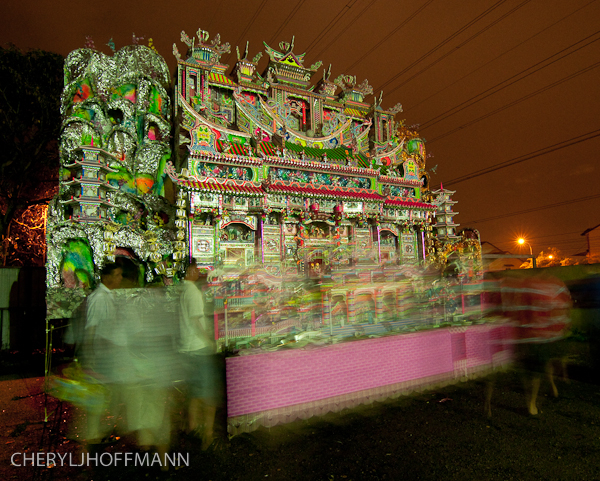
Note that even in heaven, it seems, Malaysians back their cars in…
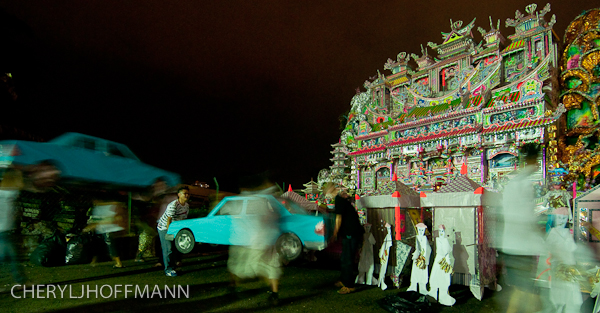
It was starting to rain so there was a real rush towards the end to get the fire going. Prayers were perfunctory as soon as everything was moved outside and embellished with paper gold and silver nuggets.
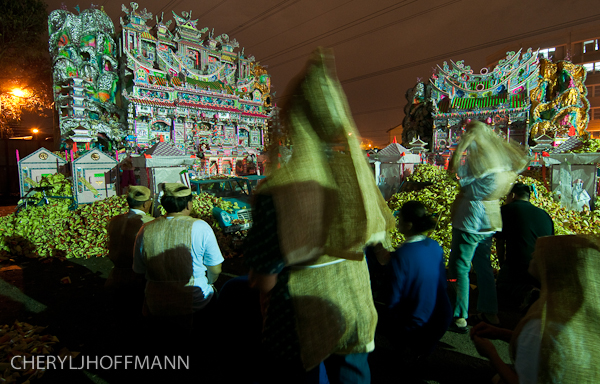
And then the burning began.

Within seconds the bonfire was HUGE and everyone was shifting back to get away from the intense heat.
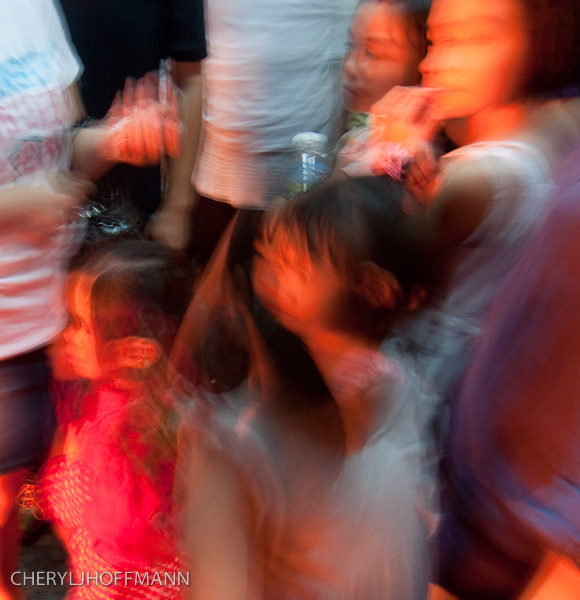
It is believed that messages from the heavens can be seen in the flames and smoke of these ritual fires. So, I leave you with the tea leaves…

